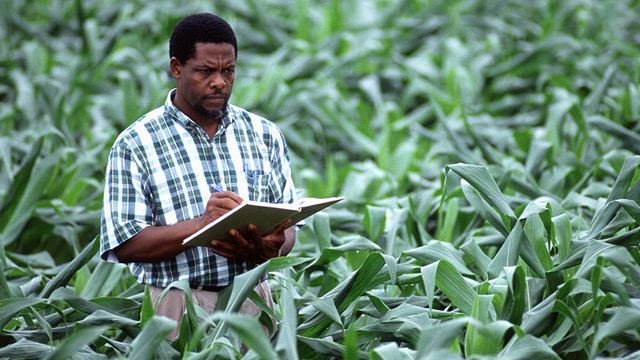Animal and plant breeders are trying out a set of powerful new tools which have the potential to revolutionize agricultural practices and provide consumers with more healthy and safe food options.
Their new toolbox is called gene editing, and the instruments in it have strange-looking names: endonucleases, for example, which are enzymes breeders can use to sever selected DNA proteins on an organism’s chromosomes, allowing the breeder to make changes at the DNA break points, and thus alter the organism’s genetic makeup.
“We use the term ‘gene editing’ rather loosely” in the world of science, said Bernice Slutsky, senior vice president for the American Seed Trade Association. At its core, gene editing is “plant breeding innovation,” she said. Plant breeders have always used a range of tools – a toolbox of different disciplines.” With the new techniques, they are “doing the same things that breeders have always done, but very precisely,” she said.
The precision Slutsky describes did not suddenly burst forth full-blown but is what researchers have built in recent decades. Some milestones include:
Development of a technique called polymerase chain reaction in the 1980s. It allows researchers to duplicate a fragment of DNA proteins thousands or millions of times, providing a quick and cheap supply of specimens for their research.
Another key gene editing tool, zinc-finger nucleases, emerged more than a decade ago. ZFN are enzymes that target sequences of genes on chromosomes where genetic amendments are sought. This is similar to the newer gene editing processes but is considered more laborious and often less successful.
What’s more, in the past two decades or so, scientists have laid the table, so to speak, for gene editing by locating and cataloging – called sequencing – the entire genomes of a multitude of plants and animals. That makes virtually every gene potentially available for breeders to find and amend or delete. Full sequencing has been done for cattle, chickens and pigs. In addition, the sequenced genomes of almost 200 different plant species have been published, according to Todd Michael, who’s been tracking plant sequencing as director of informatics for the J. Craig Venter Institute in California.
With such advances in place, two processes developed in recent years are accelerating breeders’ ability to genetically alter crops and animals and apply the brakes to harmful organisms. Both can precisely improve a plant or animal without incorporating DNA from another species. One process is a mouthful called Clustered Regularly Interspaced Short Palindromic Repeats, or CRISPR, and the other is a similarly large swallow called Transcription Activator-Like Effector Nucleases (TALEN).
1/15/18, Agri Pulse, Ed Maixner

